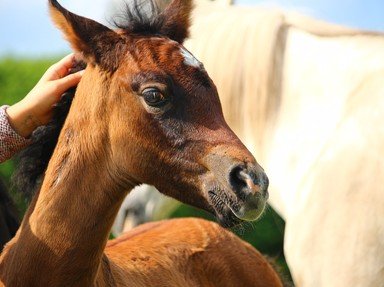Quiz Answer Key and Fun Facts
1. Food is taken into the mouth by highly selective prehensile lips. As the food is chewed, saliva is added from one of ____ pairs of salivary glands.
2. The epiglottis passes over the trachea to prevent food from entering the lungs. Instead it passes through the pharynx into which of these?
3. Food enters which part of the digestive system via the cardiac sphincter?
4. Food passes into the small intestine. The small intestine consists of three sections. They are _______ ________ and ______.
5. The small intestine requires ________ conditions.
6. Bile is produced in the _____.
7. The _____ _________ is made up of caecum, large colon, small colon and rectum.
8. The large intestine has many changes of direction throughout its length, these are known as ________ and are vulnerable to blockages (colic).
9. Water is absorbed from digesta throughout the large intestine so that by the time digesta reaches the _____ it is of a firm consistency.
10. The horse's digestive tract is approximately ___ feet long.
Source: Author
Buzby
This quiz was reviewed by FunTrivia editor
crisw before going online.
Any errors found in FunTrivia content are routinely corrected through our feedback system.

